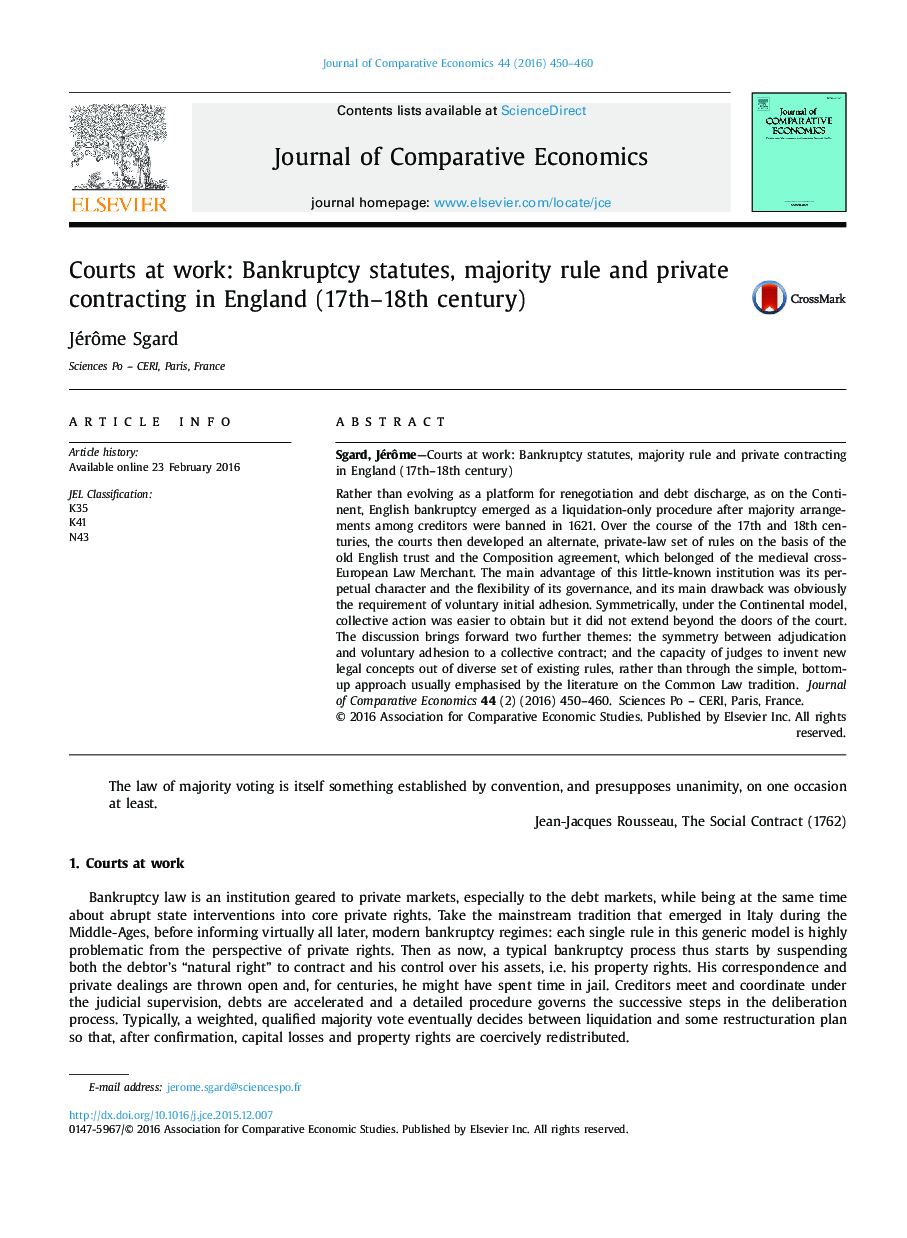| Article ID | Journal | Published Year | Pages | File Type |
|---|---|---|---|---|
| 5092296 | Journal of Comparative Economics | 2016 | 11 Pages |
Rather than evolving as a platform for renegotiation and debt discharge, as on the Continent, English bankruptcy emerged as a liquidation-only procedure after majority arrangements among creditors were banned in 1621. Over the course of the 17th and 18th centuries, the courts then developed an alternate, private-law set of rules on the basis of the old English trust and the Composition agreement, which belonged of the medieval cross-European Law Merchant. The main advantage of this little-known institution was its perpetual character and the flexibility of its governance, and its main drawback was obviously the requirement of voluntary initial adhesion. Symmetrically, under the Continental model, collective action was easier to obtain but it did not extend beyond the doors of the court. The discussion brings forward two further themes: the symmetry between adjudication and voluntary adhesion to a collective contract; and the capacity of judges to invent new legal concepts out of diverse set of existing rules, rather than through the simple, bottom-up approach usually emphasised by the literature on the Common Law tradition.
